Ever stumbled upon a bubbling source of water on your property and wondered, “What exactly is this?” You, my friend, may have just discovered a natural spring.
These hidden treasures are underground water sources that emerge from the ground due to geological formations. But what to do with a natural spring on your property?
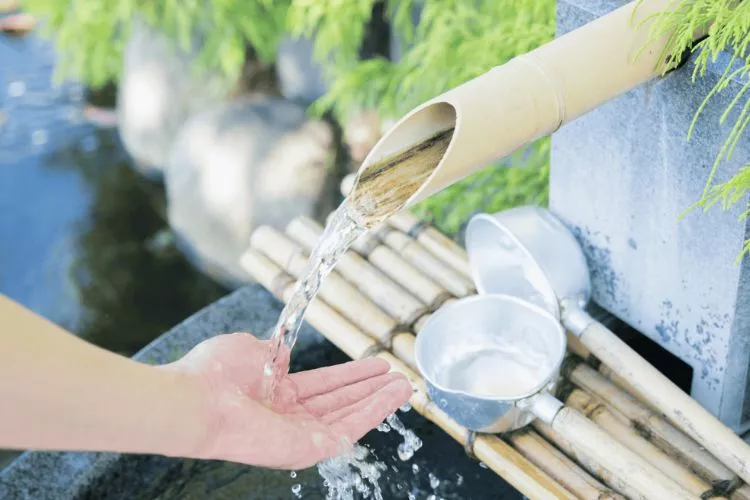
This article demystifies the world of natural springs, dives deep into their benefits, and provides actionable insights to harness their full potential. Let’s transform that uncertainty into empowerment.
Table of Contents
several ways to utilize natural spring
When you have a natural spring on your property, there are several ways to utilize it effectively:
- Source of drinking water: Obtain necessary permits, test the water quality, and install proper infrastructure to use it as a drinking water source.
- Irrigation: Use the spring water for watering your plants, gardens, or fields, reducing your reliance on external water sources.
- Aquaculture: Create a pond or water feature to support fish, plants, and other aquatic life for recreational or ecological purposes.
- Hydropower: Assess the flow rate and pressure to determine if it’s suitable for generating electricity.
- Enhance landscaping: Incorporate the spring into your landscape design or create a relaxing water feature.
- Preserve natural habitat: Maintain the spring’s ecosystem to support wildlife and promote biodiversity on your property.
Determining the spring’s water source
Your spring’s origin is essential, as it can directly impact its sustainability and quality. Often, natural springs emerge due to an intersection of permeable rock (like limestone) and a water table. The water might have traveled miles underground, collecting minerals along its path.
For instance, if your property is near a mountain base, the spring might originate from melting snow at higher elevations. Recognizing this source can give you insights into potential contamination risks and the spring’s longevity.
Water quality testing
The crystal-clear appearance of spring water can be deceiving. Hidden contaminants, from natural minerals to potential pollutants, can lurk invisibly. It’s crucial to test for pH levels, hardness, presence of heavy metals like lead or arsenic, and microbial contaminants.
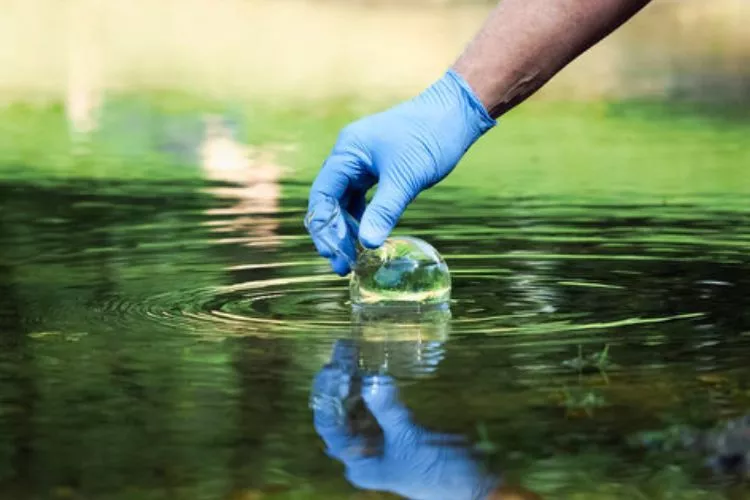
For example, a property near agricultural lands might find traces of pesticides or nitrates in the spring water. Regular testing, ideally annually, ensures that your spring remains a safe water source.
Flow rate and volume assessment
Understanding your spring’s flow rate (how fast water emerges) and its volume can guide your usage plans. It’s measured in gallons per minute (GPM) or liters per minute (LPM).
For example, a flow rate of 5 GPM (around 19 LPM) might suffice for household needs but might be inadequate for large-scale irrigation. This metric is crucial when considering projects like ponds or water features.
Legal considerations and permits
Rights to water can be a complex issue, differing across regions. While you might own the land, the water rights could belong to the community or government. For instance, in some U.S. states, even collecting rainwater requires permissions!
Before you make any substantial changes or use the spring extensively, consult local regulations. It can save you from potential legal battles down the road.
Pro tips
Consult with a geologist or hydrologist
Their expertise can be invaluable. These professionals can provide insights into the spring’s origin, longevity, and potential issues. For instance, they can identify if nearby construction might disrupt the spring or if there’s a risk of it drying out in the coming years.
Engage with local regulatory agencies
Proactive engagement can be a game-changer. Instead of waiting for issues to arise, liaise with local water boards or environmental agencies. They can guide you on best practices, potential grants for conservation, and keep you updated on changing regulations.
You may also read: Discover How to Find an Underground Spring on Your Property?
Benefits of having a natural spring on your property
Discovering a natural spring on your property isn’t just about unearthing a shimmering pool of water; it’s akin to stumbling upon a gold mine of opportunities. Beyond the immediate allure of clear, bubbling water, a natural spring can become an unparalleled asset, with benefits spanning from practical utilities to environmental boons.
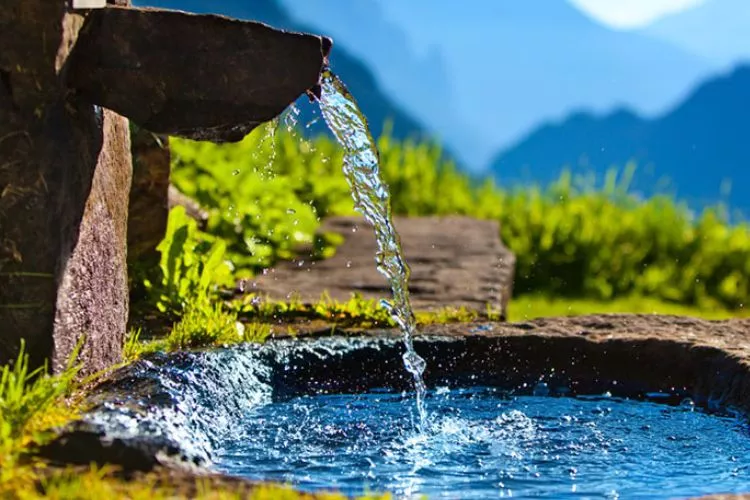
Whether you’re envisioning a self-sustaining homestead or a tranquil oasis for relaxation, understanding these benefits can guide your journey. Let’s dive into the myriad advantages that come with this serendipitous find.
Access to a clean and reliable water source.
Imagine the luxury of sipping fresh water right from your backyard without relying on external sources. A natural spring can offer you just that—a constant and often pure source of water.
With the correct water quality checks in place, you can have a supply that’s possibly cleaner than most municipal sources, free from added chemicals like chlorine. Whether you’re looking for drinking water, an irrigation source, or simply a place to replenish, a natural spring can be a water haven.
Think of arid regions where homeowners have to rely on water deliveries; in such scenarios, a spring can be nothing short of a lifeline.
Enhanced landscaping and aesthetic appeal
A natural spring can dramatically elevate the look and feel of your property. The mere presence of water has a calming effect, adding a touch of tranquility to any space. Incorporating a spring into your landscape can range from creating a simple reflective pond surrounded by local flora to elaborate water features with cascading falls.
Imagine a garden where the gentle sound of flowing water harmonizes with chirping birds, creating an ambiance that’s a constant invitation to relax and rejuvenate. Such features not only enrich your daily experience but can significantly boost your property’s market value.
Potential for water harvesting and sustainability
In an age where sustainability is more than a buzzword, having direct access to a natural water source provides opportunities to reduce reliance on external, often over-exploited water systems. Harvesting spring water isn’t just about direct consumption.
With proper infrastructure, you can store excess water for drier periods, ensuring you have a year-round supply. This can be particularly beneficial for regions prone to seasonal droughts. Moreover, utilizing spring water for irrigation can nourish your gardens and crops with mineral-rich water, potentially enhancing yield and quality.
By integrating this natural resource into your sustainability plan, you can reduce your environmental footprint while ensuring resource security.
Recreational and relaxation opportunities
The therapeutic sound of trickling water, the gentle ripples reflecting the sun’s rays, the refreshing feel of natural water against your skin—having a natural spring can transform your property into a recreational haven.
Depending on its size and depth, a spring can be perfect for a dip on a hot summer day or even accommodate water sports like kayaking. And if you’re more into relaxation, imagine lounging beside your spring, book in hand, or meditating to the ambient sounds of nature, with the spring at its heart.
Support for local wildlife and ecosystems
A natural spring isn’t just a water source for you—it’s an ecosystem in itself. These water bodies can attract a diverse range of wildlife, from birds that come to quench their thirst to amphibians that call it home. Over time, you might find your spring surrounded by deer, butterflies, and even the occasional otter.
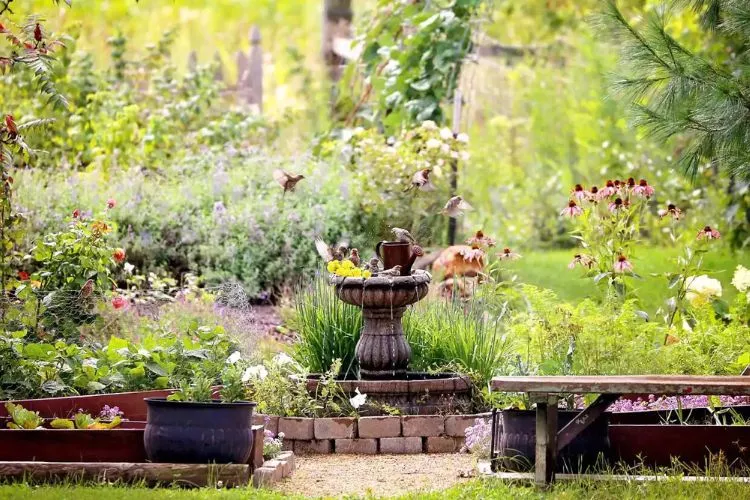
Such biodiversity can play a crucial role in maintaining ecological balance. Moreover, the wetland vegetation that often grows around springs can act as a natural filter, enhancing water quality and providing a habitat for numerous organisms.
Increased property value
Real estate dynamics often boil down to unique features and utilities, and a natural spring undoubtedly stands out in this regard. Prospective buyers are likely to be captivated by the charm and utility a spring brings, setting your property apart in the market.
Be it for its aesthetic appeal, the promise of a reliable water source, or the potential for sustainable living, a spring can significantly boost your property’s valuation. It’s not just a natural feature; it’s an investment that grows over time.
Potential for cost savings on water bills
Let’s talk numbers. Relying on a municipal water supply or frequent water deliveries can be costly, especially in regions with water scarcity. In contrast, once you’ve set up the necessary infrastructure around your spring, the recurring costs are minimal.
Whether you’re using the spring for household needs, irrigation, or livestock, the gallons (or liters) you draw from it directly translate to savings. Over the years, this can amount to substantial financial benefits, making the initial investment in quality checks and infrastructure entirely worth it.
What to do with a natural spring on your property? 4 Amazing Ideas
Stumbling upon a natural spring on your land is like uncovering a hidden gem—a treasure brimming with potential. But how do you harness this newfound bounty to its fullest? Beyond its obvious utilities, a spring offers endless creative avenues to elevate your property’s appeal, functionality, and sustainability.

From crafting captivating landscapes to pioneering sustainable water systems, the possibilities are vast and thrilling. Dive in as we unravel four transformative ideas to turn your natural spring into an enviable paradise.
Landscaping and Aesthetics
Embracing the beauty of a natural spring is about intertwining its inherent charm with thoughtful landscaping. When done right, it can transform your property into an idyllic sanctuary, a retreat that offers solace and serenity in equal measure.
Natural spring as a focal point
Positioning your spring as the heart of your landscape can be a masterstroke. By building pathways leading to it, installing seating areas around it, or even placing artistic installations nearby, you can draw attention to this natural wonder.
Whether it’s a morning coffee spot, an evening relaxation corner, or simply a place for contemplation, your spring becomes more than just a water source—it becomes an experience.
Creating a pond or water feature
Elevate the allure of your spring by converting it into a pond or an intricate water feature. Ponds can be adorned with lily pads, fish, and ornamental plants, creating a lively aquatic ecosystem.
For those looking for something more dynamic, consider adding a waterfall or fountain. The cascading water not only adds to the visual appeal but also aerates the water, benefiting aquatic life.
Incorporating native vegetation
By planting native flora around your spring, you achieve two things: you enhance the natural beauty of the area, and you support the local ecosystem. These plants are adapted to the region’s climate and soil, ensuring they thrive with minimal maintenance.
From flowering plants that attract pollinators to tall grasses that sway with the wind, native vegetation complements the spring’s charm.
Wildlife habitat enhancement
With water and native plants, your spring area can quickly become a hotspot for wildlife. Birds, butterflies, amphibians, and even small mammals might frequent this oasis. By providing nesting spots, feeders, or even simple rock piles, you can enhance this habitat, turning your property into a lively nature reserve.
Pro tips
Use natural stone for landscaping
Stone pathways, borders, or even simple boulders can elevate the rustic charm of your spring area. These natural elements blend seamlessly with the surroundings, offering both functionality and aesthetics.
Promote biodiversity with a variety of plant species
Don’t limit yourself to a few plant types. By incorporating a diverse range of flora, you encourage a richer ecosystem, attracting various fauna and ensuring a vibrant, ever-changing landscape.
Water Harvesting and Usage
Harnessing the untapped potential of your natural spring doesn’t just elevate aesthetics; it’s a step toward sustainability and self-sufficiency. By optimizing the water yield, you not only safeguard a priceless resource but also infuse everyday life with nature’s purity.

Water purification and filtration systems
While spring water is often fresher than many sources, it’s paramount to ensure its purity for household use. Implementing a robust filtration system can remove any impurities or contaminants, making the water suitable for drinking and cooking.
Technologies like UV purification, reverse osmosis, or even simple sediment filters can play a pivotal role in this process.
Domestic water supply
Imagine drawing your morning coffee water straight from a pristine spring or filling your bathtub with nature’s bounty. Tapping the spring for domestic water supply can be both economical and gratifying. With the right infrastructure—like pumps and storage tanks—you can seamlessly integrate the spring into your home’s plumbing.
Irrigation for gardens and lawns
A consistent water source like a spring can be a boon for avid gardeners. Whether you’re cultivating a vegetable patch, maintaining a lush lawn, or tending to ornamental flower beds, the spring water can provide the hydration they crave. Drip irrigation or soaker hoses can be ideal methods, ensuring efficient water usage.
Livestock watering
For those with a farm or homestead, a natural spring can quench the thirst of livestock. Fresh spring water can be an excellent source for cattle, poultry, or even fish ponds. Establishing troughs or small ponds can facilitate easy access for animals, ensuring their health and well-being.
Pro tips
Invest in a high-quality water filtration system
Your health is paramount. Don’t skimp on filtration. Investing in a top-tier system guarantees the purity of water, safeguarding you and your family from potential contaminants.
Implement a rainwater harvesting system in conjunction with the spring
While the spring provides a steady supply, why not augment it with rainwater? Collecting and storing rainwater can further bolster your water reserves, offering an integrated approach to self-sufficiency.
Recreational and Relaxation Spaces
Amidst the hustle and bustle of daily life, your natural spring can emerge as a haven of tranquility and leisure. By crafting spaces that amplify relaxation and recreational pursuits, you can immerse yourself in nature’s embrace, creating memories that last a lifetime.
Building a deck or gazebo
Overlooking the glistening waters of the spring, a deck or gazebo can be your personal outdoor retreat. Whether it’s for hosting Sunday barbecues, star-gazing nights, or just lazy afternoons with a book, such structures amplify the usability of the spring area. Crafted with the right materials and design, they can seamlessly blend with the natural surroundings.
Swimming and water sports
If your spring is of significant size, it might just be the perfect spot for a refreshing swim. Clear, cool waters beckon on hot summer days. For the more adventurous, it could also serve as a hub for water sports—think paddleboarding or even a gentle kayak ride. Remember, the more active the water use, the more essential regular quality checks become.
Meditation or relaxation areas
The gentle babble of the spring, the rustling leaves, and the songbirds can provide the ideal backdrop for meditation or yoga. Designating a quiet corner near the spring for such activities can rejuvenate the mind and body. It could be as simple as a flat stone slab, a hammock between trees, or even a raised platform for an elevated view.
Pro tips
Ensure safety measures for swimming areas
If swimming is on the agenda, prioritizing safety is non-negotiable. Ensure clear demarcations for depth, have floatation devices handy, and possibly even install a barrier to separate swimming zones from plant or wildlife-rich areas.
Use eco-friendly materials for construction
Our bond with nature mandates respect. When constructing any structure near the spring, opt for sustainable, eco-friendly materials. Whether it’s recycled wood, bamboo, or non-toxic paints and finishes, every choice ensures that the spring’s ecosystem remains untainted.
Conservation and Environmental Considerations
While the allure of a natural spring is undeniable, it’s equally vital to remember our custodial responsibilities. Being the guardian of such a treasure comes with the duty to protect and preserve, ensuring that the spring and its accompanying ecosystem thrive for generations to come.
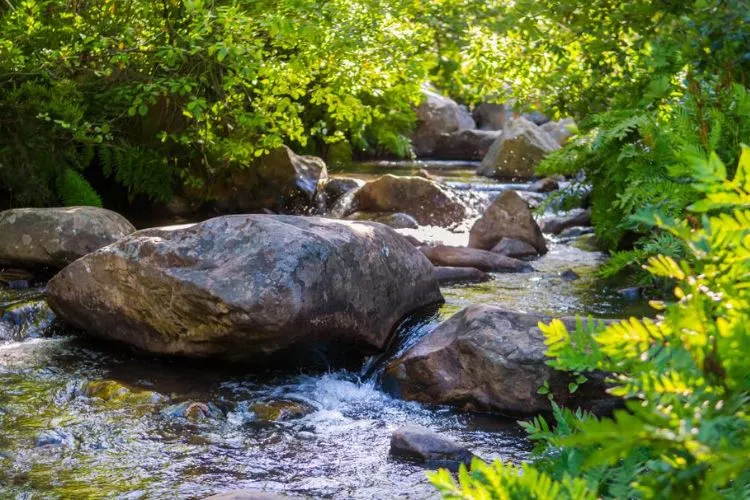
Protecting the spring and surrounding ecosystems
Natural springs are delicate systems, home to a diverse array of flora and fauna. Disturbances, whether from construction, increased foot traffic, or chemicals, can disrupt this balance. It’s essential to be aware of the ecosystem’s needs, from the aquatic plants filtering the water to the amphibians calling it home. Every decision should be made with conservation at its core.
Reducing potential pollution
The clarity and purity of spring water can be threatened by various pollutants. Runoff from nearby roads, pesticides from gardens, or even waste from recreational activities can taint the water. Implementing measures such as strategic landscaping to divert runoff, using organic gardening practices, or simply ensuring proper waste disposal can all contribute to a cleaner spring.
Sustainable practices
Embracing sustainability is more than just a trend; it’s a lifestyle choice that safeguards nature. This could mean using solar-powered lighting around the spring, employing water-saving irrigation methods, or even introducing native plants that require less care and water.
Pro tips
Establish a buffer zone around the spring
One of the best ways to protect a spring is by keeping a ‘no-disturbance’ zone around it. This buffer, filled with native vegetation, acts as a barrier, filtering runoff and providing habitat for wildlife, all while reducing direct human impact on the spring itself.
Implement eco-conscious gardening and landscaping techniques
Nature thrives when left to its devices. Opt for native plants that are accustomed to the local soil and climate. Ditch chemical fertilizers in favor of organic compost. Every eco-conscious decision plays a part in nurturing and preserving the spring’s pristine nature.
Frequently Asked Questions (fAQs)
How do I find the source of my natural spring?
Trace the spring’s flow uphill or consult with a geologist to pinpoint its origin.
What should I do if the water quality is not suitable for consumption?
Implement a water purification system and regularly test before consumption.
Can I use the spring water for my entire household?
Yes, if it’s abundant, consistently flowing, and passes quality tests.
What permits or legal requirements are associated with owning a natural spring?
Consult local regulations; permits may be needed for water usage or alterations.
How can I ensure the safety of swimming areas?
Regularly test water quality, clear debris, and set clear boundaries.
What are the key considerations for building recreational structures near a spring?
Prioritize environmental protection, ensure structural stability, and consult local regulations.
Conclusion
In summary, owning a natural spring offers numerous benefits, from clean water access to enhanced property aesthetics. It’s a privilege that comes with responsibilities. We encourage you to embrace this gift, maximizing its potential while upholding sustainable and eco-friendly practices.
We hope that this guide has been helpful. You can read about similar topics here on our website. Check back again soon for more.


